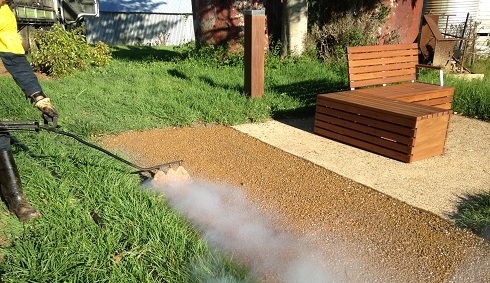
Sourcely bitumen surfaces. The easiest way to use a bituminous binder to connect the loose aggregate of the surface is the surface bitumen of damaged gravel or crushed surfaces with tar or asphalt. Such surfaces after cleaning from loose aggregate and leveling are sprayed with a liquid bituminous binder, and then sprinkled with a thin layer of pure crushed stone or grit with a specific grain. Cleaning the improved surface is performed to prevent a aggregate bitumen buthable.. Aggregate scattered on the sprayed surface should be aligned in accordance with the desired profile and a decrease in the surface, and then rolled up with a mass 3-4 ton. If the surface improved in the described way is very uneven, Introduced places are sprayed and completed with aggregate until the surface is equalized. Then the entire surface can still be 2-3 spray times and cover with a layer of aggregate. The improved surfaces described in the described way have an aesthetic appearance resembling gravel or crushed surfaces; However, they are much more durable than them, and above all, they do not undergo the destructive effect of rainwater.